All I really need to know, I learned in wood shop
And some thoughts on one of the best teachers I ever had.
I wrote a book! It has come to my attention that not all of my readers know that LIVING SMALL was a book before it was a Substack. The Little Book of Living Small is available wherever books are sold. If you like the newsletter, I think you’ll like the book.
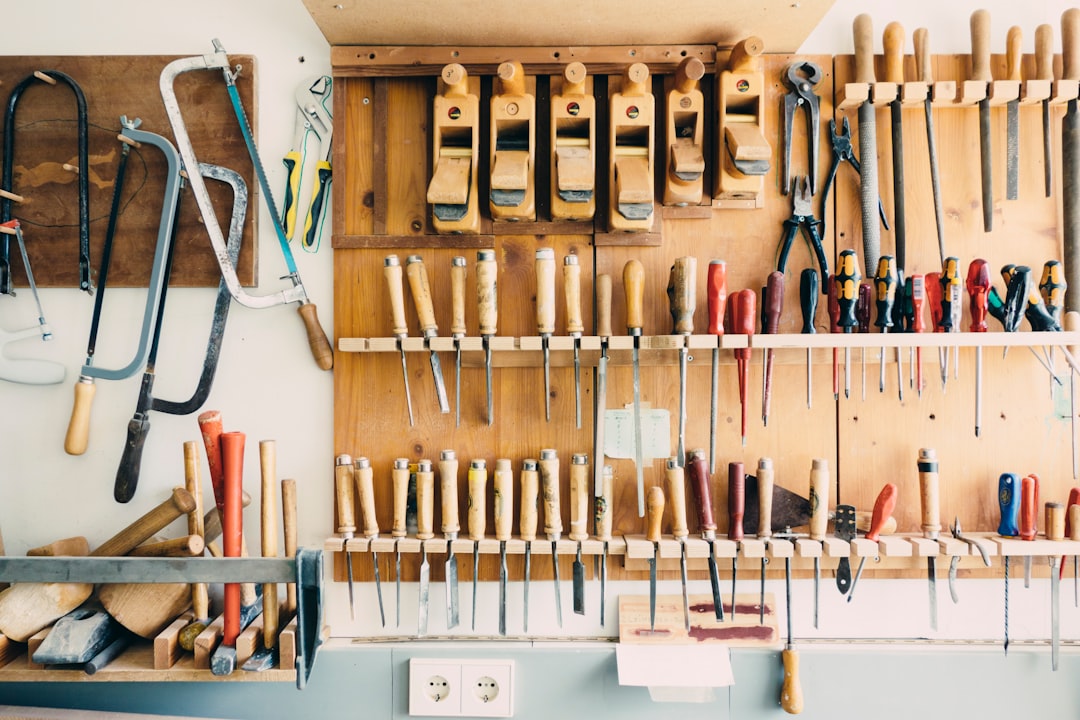
My sister texted me earlier this week to tell me that one of our high school teachers, Mr. Strecker had died1. It got me to reflect on the power of a great teacher–and how they might impact our lives in more ways than we realize.
When I didn’t get cast in the high school play during my freshman year, I signed up for the set and lighting crews. But unlike many other wannabe actors, who joined the crew and promptly dropped out, I discovered I preferred the backstage work. I spent countless hours of my high school years building sets, rigging lights, and stage managing shows.
In spring and fall, the set crew met almost every day after school in the wood shop, and if I am remembering correctly, we were given our own garage bay in which to build the sets for our high school’s ambitious theater troupe. We were a motley crew: full-throttle nerds, goth-ish types, and also a charismatic class president, who was the captain of the swim team. All of us were supervised by the woodshop and technology teacher, Mr. Strecker.
Most of us had no previous experience with power tools of any kind, but Mr. Strecker taught us how to use the table and jigsaws, the drill press and hand drills, including the persnickety hole saw attachment, and any other tool we wanted to use. Streck was funny, animated, and easy to be around. He drove a little pick-up truck with a camper shell on the back he’d outfitted with shelves for all his tools (he did carpentry in the summers) that I loved. Streck’s signature phrase was, “Keep smiling, kiddo.”
Photo by Jeanna Petersen Shepard for The Darien Times
The technical skills I learned from Mr. Strecker are ones I have used throughout my adult life. I’m grateful for that practical knowledge, but what was even more important was what he showed us about a maker’s life. He taught us to problem solve, to be curious and inventive. Working in the wood shop required us to be focussed and patient, and rewarded us with the experience of making something out of nothing.
Mr. Strecker instilled in us the belief that we could make just about anything–and we did! He helped us figure out how to build enormous palm trees and a bamboo shower with running water(!) for a production of South Pacific. When my friend Tori and I decided to build the set for Guys and Dolls with a forced perspective, he did not bat an eyelash, but pointed out it might be tricky to find the glass for our street lights in the right sizes, so we should start looking now. In the technology club, which he also supervised, the kids were building a hovercraft—in 1998.
People love to talk about how team sports foster collaboration and teach kids to meet challenges: I say put them on the set crew and they’ll get valuable life skills out of the deal too. It was also a whole lot of fun.
I realize now, how lucky we were to have this exceptional teacher who was beyond generous with his time. (The other teachers who ran the theater program were equally wonderful.) I can’t help wondering if my own child will get a chance to do anything even remotely like this: Hours spent working with his hands, thoroughly encouraged but mostly left to do his own thing.
It’s also hard to imagine that I’d be doing what I do today without Mr. Strecker and those hours spent building sets. As a young editor, I confidently volunteered to edit the how-to instructions in the first magazine I worked at (a job no one else wanted, PS) because I had actually built all kinds of things as a teenager. That first editing work set me off on the path of reporting about homes and how-tos. Having built big, complicated structures, I understood what went into making a chair or a building, and it made me better at writing about them—and made me appreciate them more.
I know shop isn’t offered in many high schools anymore (the New York Times was tolling the death knell for shop when I was in my junior year), but maybe it will make a comeback? Not only would the return of woodshop be a lifeline of talent to the trades, but it would give all the lawyers, software developers, and HR professionals some handy skills and an appreciation for the people who build things for a living.
I can’t help wondering if wood shop classes might be an antidote to our renovation culture? Surely, if more people knew how to fix small things, there’d be less of a relentless urge to renovate–and maybe even less of a tear-it-all-down mentality when it comes to olde homes? Maybe, maybe not, but it’s nice to imagine.
I haven’t built anything in years, but in honor of Mr. Strecker, I’d love to try.
What about you, did you take shop in high school? Were you ever on a set crew? How did it impact you? I’d love to hear in the comments.
Further reading.
I wish I’d found the time to thank Mr. Strecker and tell him how much he meant to me. My fellow theater-nerd-turned-New-York-City journalist, Molly Simms actually did this for our other wonderful theater teacher, Nancy Herman. Molly wrote about it in O, Oprah’s magazine, back in 2018 as the last part of a happiness project. The article remains a great read and miraculously still online.
3 More Things
A grab bag of DIY inspiration, the best house tour I saw all week, the new design books I’m coveting, and more…
Aspiring to do-it-myself (again)
I’ve mentioned
before, but if you are an amateur DIYer, Jeff Waldman’s plans for small outdoor structures (and this daybed above) might be just the thing to get you started on something bigger. Writer Seth Putnam, who recently revived his newsletter Shelter (and should totally come over to Substack!), mentioned Michael Pollan’s A Place of My Own, a book about how Pollan taught himself how to build a writing cabin from scratch, and it's now on my to-read list. I also keep a Pinterest board of DIY furniture projects, and I sincerely wish this Instagram account @self.assembly had stayed active (worth a scroll through the old posts though).Admiring this organized home
My friend
’s new book Organized Living comes out on October 3rd. Domino shared a sneak peek of the book with an excerpt of pro organizer Tinka Markham Piper’s home. I love how Tinka’s house shows that you can be organized but still have a home filled with art, vintage finds, and Joann’s worth of hobby supplies.+ Shira’s having a book event here in New York City on October 5: I’ll be there!
Drooling over fall books
This fall is proving to be one of the best publishing seasons for design books in recent memory. There are too many good ones recently out or forthcoming out to list them all here, but three books from three firm’s I admire all debuted on September 5 (an embarrasments of riches!): Heidi Caillier’s Memories of Home, Shamshiri: Interiors from Studio Shamshiri, and Our Way Home: Reimagining an American Farmhouse by the Hendricks Churchill’s founders. I’m also unusually excited by three books published by brands: Ralph Lauren A Way of Living, Charm School: The Schumacher Guide to Traditional Decorating for Today and The deVOL Kitchen
One last thing: Katherine Martinko of
, who was featured in LIVING SMALL (back in July, 7.20.23) has an insightful piece out in The Globe and Mail about teens and cell phones.Oh, and a cute lamp!



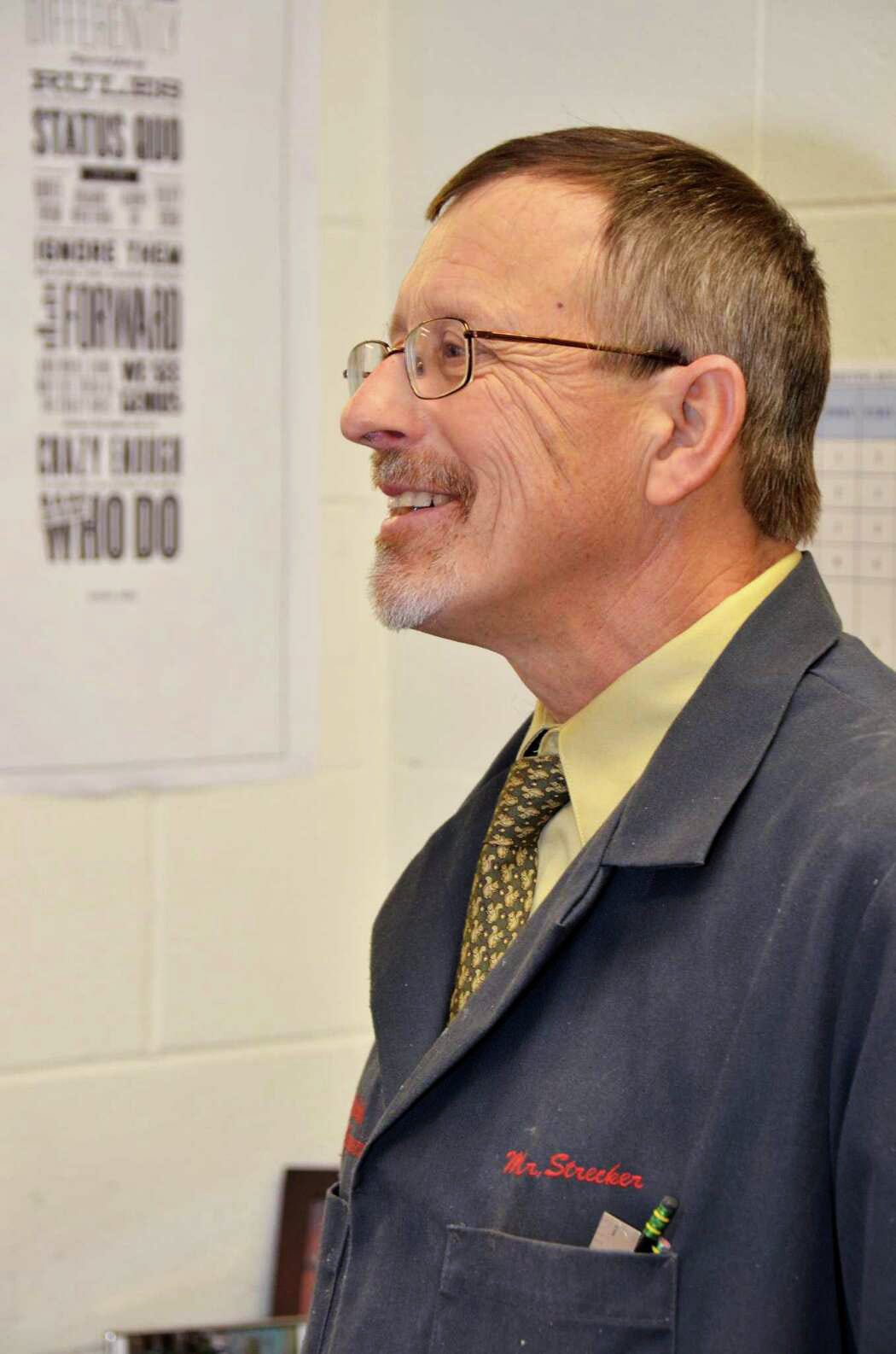
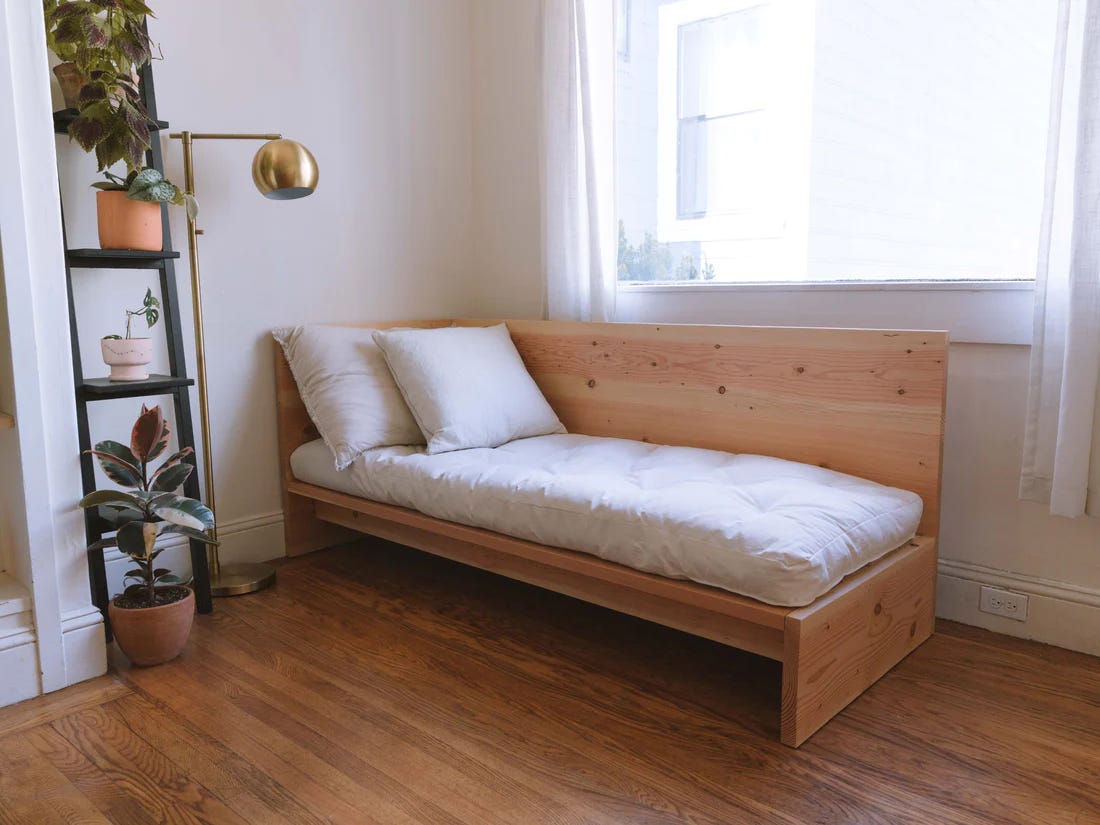
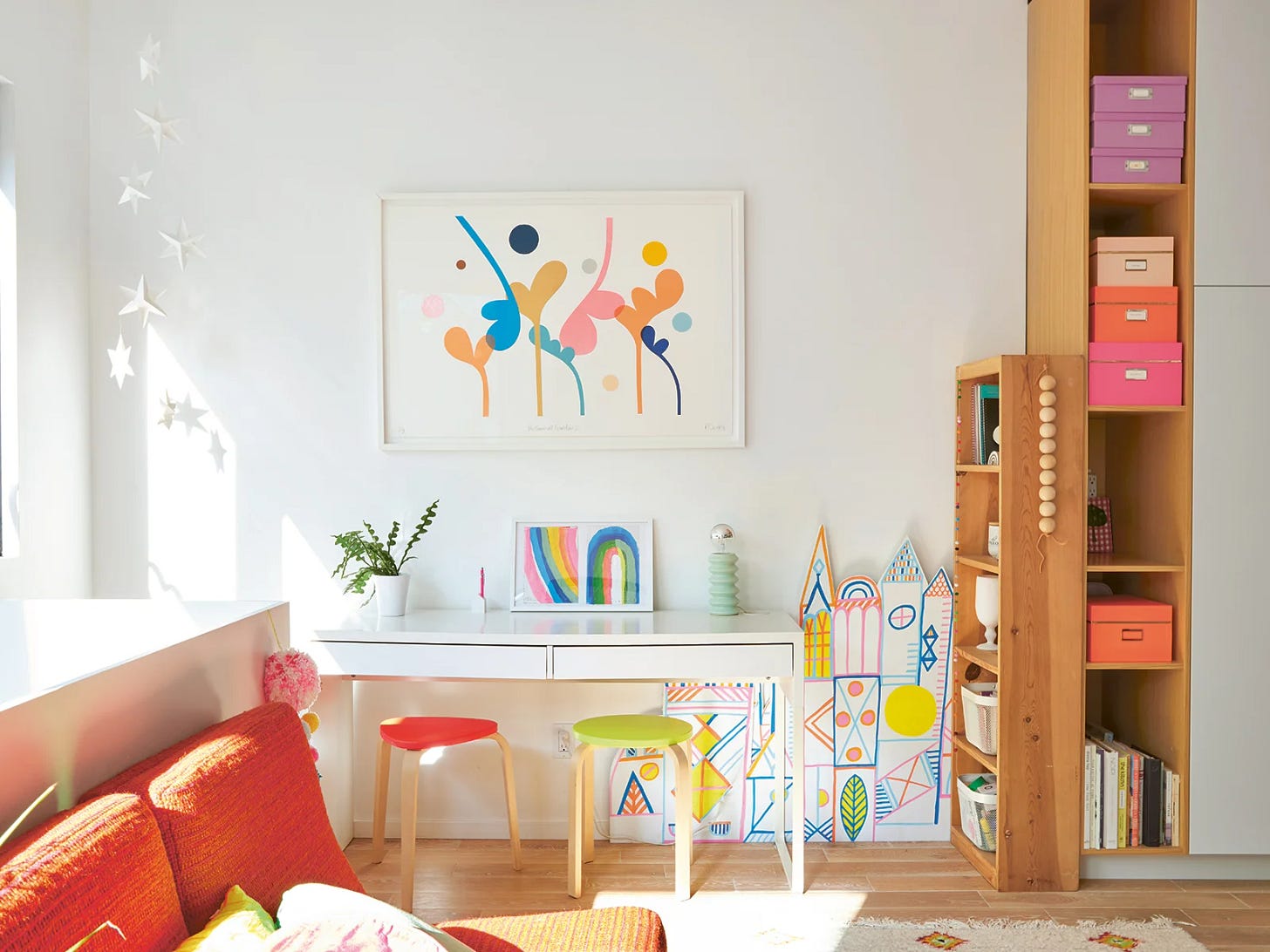
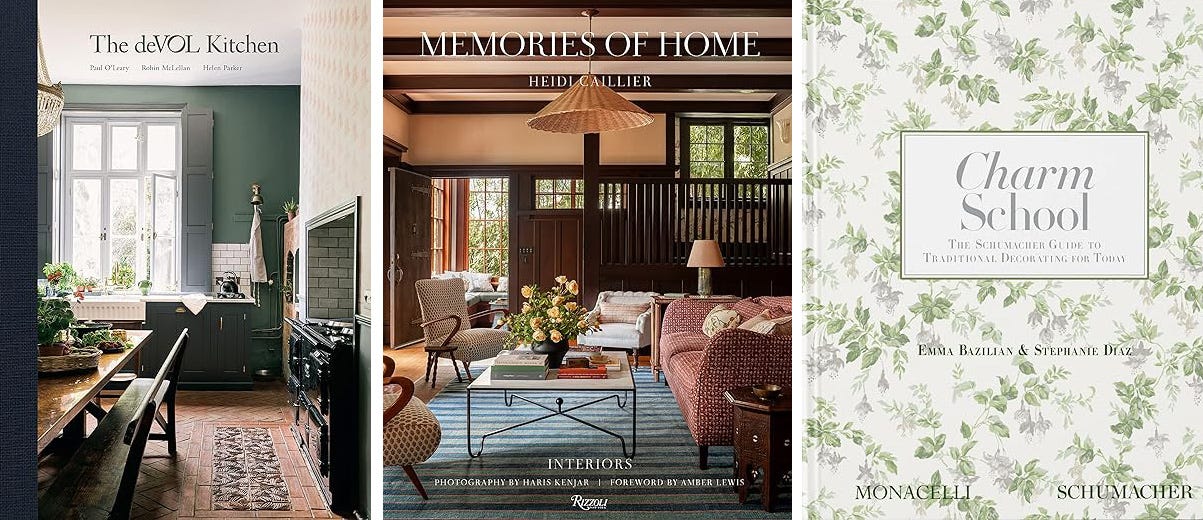
A beautiful tribute!
I also simply adored my shop class (for me it was in middle school, which is kind of surprising now that I think of it). There's something so empowering about learning to make things with your hands. And I never drew the connection between shop and my interest in shaping my space, but it's entirely possible one led to the other or that my interest in both comes from the same place. Thank you for the lovely reflection about this special man.